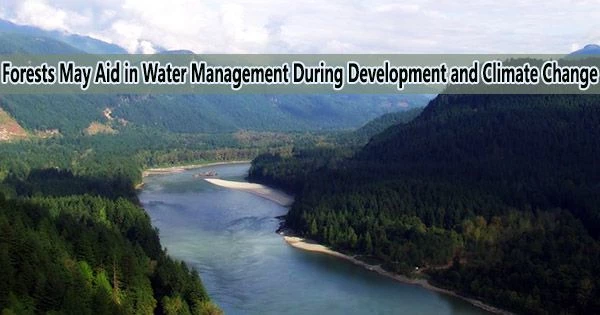Keeping buffers of trees or other greenery around waterways in places around Raleigh that are anticipated to experience increased future development could help slow rushing streams during wet conditions and keep them flowing during dry ones.
But, as development expands and the climate becomes warmer and wetter, experts from North Carolina State University cautioned that these so-called “riparian buffers” would not be a panacea for managing water.
“Buffers are good for watersheds there’s a lot of literature that shows that they’re great for water quantity and also for quality,” said the study’s lead author Elly T. Gay, a graduate student in forestry and environmental resources at NC State. “But in the future, buffers in isolation may not be viable as the only option to mitigate negative consequences that increased development and more variable climate might have on water quantity; they need to be coupled with other management strategies.”
According to Katherine Martin, co-author of the study and assistant professor of forestry and environmental resources at NC State, forests have the ability to filter water as well as slow it down to prevent floods or maintain water levels during droughts.
In contrast, urban locations with more paved surfaces may have more intense stream flows. One strategy to assist manage water in urban areas is riparian buffers.
“Urban hydrology is a lot more flashy,” Martin said. “When it rains, and you have an area with a lot of buildings and roads, the rainfall goes immediately into the streams. There’s not a lot of time for it to seep into the ground. In forests, the water is filtered through the soil and used by plants. It’s a slower process of getting the water to the stream, even if it’s not raining. That’s important for aquatic species, so they have enough water. When stream levels are low, pollutants get concentrated.”
In the study, researchers projected average stream flow between 2017 and 2060 for the Upper Neuse River Watershed, the watershed that starts in Durham, feeds into Falls Lake to supply water to Raleigh, and drains through to Goldsboro.
We found that buffers can increase flow during the lowest flow events, and they can decrease flow during the highest flow events in more localized areas. These localized areas are typically in the places with the highest levels of development we found buffers had the largest effect in those areas.
Elly T. Gay
They modeled the impact of three different scenarios for riparian buffers to see how they’d impact stream flow: They tested a “business as usual” scenario with existing forest or greenspace, which includes a 50-foot state-mandated buffer area, as well as many areas that were exempted. Additionally, they considered two scenarios where the forest buffers were increased to 100 feet and covered a total of 50 feet of the watershed.
They also predicted the effects of climate change on temperature and precipitation, as well as the potential growth of low-intensity development.
“We modeled a higher greenhouse gas emissions scenario, but precipitation was not particularly extreme,” said Martin. “We were also interested in testing how expanded development would affect stream flow because of this link between increased impervious surface, and the impact it has on water quantity and quality.”
They found that on average, daily streamflow across the watershed would increase. In some regions without buffers, they predicted an increase in the average daily stream flow of as much as 28%.
They observed that buffers in some of the most developed regions were associated with greater reductions in stream flow under wetter conditions.
During dry spells, they saw that buffers had mixed results. The reverse of what scientists expected to discover, buffers were instead associated in some regions to decreases in daily stream flow during dry times.
Yet, buffers did appear to assist in maintaining water levels in locations at either end of the development spectrum: they supported stream flow in a watershed region with the highest potential for future development as well as water levels in undeveloped areas.
“We found that buffers can increase flow during the lowest flow events, and they can decrease flow during the highest flow events in more localized areas,” Gay said. “These localized areas are typically in the places with the highest levels of development we found buffers had the largest effect in those areas.”
However, researchers said the effects weren’t as striking as they expected, and there was little difference when they compared the 50-foot and 100-foot buffers.
“This suggests there is a role for buffers in mitigating extremes for stream flow, but it can’t be the only strategy,” Martin said. “We need a comprehensive plan for the future if we want to maintain high water quality that includes not only riparian buffers, but more, and larger, green spaces, which have an abundance of benefits beyond just water.”





